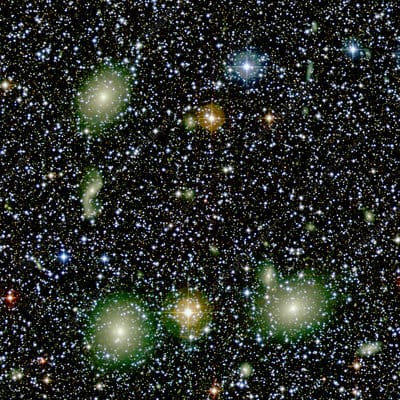Astronomers have announced the discovery of Quipu, a massive and intricate structure of unimaginable scale, which stands as the largest known entity in the observable universe. The finding, named after the ancient Incan system of cords and knots used for record-keeping, is a monumental breakthrough in astrophysics and deepens humanity’s understanding of the cosmos.
Quipu is not just a solitary object but a sprawling interconnected network of galaxies, gas, and dark matter, stretching across billions of light-years. It is a prime example of the universe’s large-scale structure, laying bare an intricate web of connections linking galaxies to one another. The structure was detected through state-of-the-art telescopes and a combination of spectroscopic surveys and computational analyses. Its sheer size and complexity challenge existing theories about the limits of cosmic formation and growth, pushing scientific inquiry towards new frontiers.
For decades, scientists believed that the cosmic web represented the ultimate map of the universe’s structure. Consisting of nodes of galaxies connected by filaments and separated by vast cosmic voids, the web was thought to lay the boundaries of our comprehension. However, Quipu now redefines this understanding by being not just a filament but a galactic-scale ribbon of extraordinary proportions.
The naming of the structure as “Quipu” is rooted in its resemblance to the Inca’s knotted thread system, symbolizing its interconnected nature. Researchers noted patterns in the distribution of light and matter within this structure that echoed the orderliness of the ancient record-keeping tool. Quipu’s presence was detected as a result of light passing through various galactic clusters distributed along its length, revealing uncharted regions of what seemed to be inescapable cosmic clumps and threads.
The discovery was the result of years of collaboration between major observatories across the globe, including leading facilities in Chile, Hawaii, and space-based observatories. The scientists utilized advanced algorithms capable of analyzing weak gravitational lensing—subtle distortions in light caused by dark matter—to map its unseen mass. This approach allowed them to unveil the shadow of Quipu across the skies.
Quipu’s size challenges the very cosmological principle that the universe is homogeneous at its largest scales. With a length stretching possibly billions of light-years, its discovery implies that previous estimations on the universe’s isotropy—consistency of properties in every direction—might need revision. Such a comprehensive rethinking of theory paves the way for both excitement and skepticism within the scientific community.
The implications of Quipu extend beyond its size. As one of the main tracers for galaxy distribution, it also hosts significant amounts of dark energy interactions. This mysterious force that drives the acceleration of the universe might find new clues in the dynamics governing such behemoth structures. Moreover, Quipu’s impressive gravitational pull affects cosmic radiation and can provide researchers with a glimpse into the universe’s expansion history.
Astronomers are now closely investigating Quipu’s origins. Preliminary data suggests that it formed roughly three billion years after the Big Bang, during the universe’s initial stages of structural formation. However, researchers remain uncertain about the factors that allowed for its unprecedented growth. Future studies aim to focus on how such a massive entity could plausibly evolve without violating the laws of physics.
The discovery of Quipu coincides with technological advancements that have pushed scientific boundaries like never before. Instruments like the James Webb Space Telescope and other next-generation observatories will likely play a crucial role in providing more detailed data on this celestial marvel. As such, the scientific team has highlighted the importance of integrating new generative AI tools for structuring three-dimensional mappings of the data collected.
Despite the aggressive progress in the field of astronomy, many questions remain unanswered. How do structures like Quipu withstand the test of time and universal expansion? What role does dark energy play in stabilizing or destabilizing such massive constructs? To address these questions, collaborative projects such as the Square Kilometer Array (SKA) telescope are expected to provide unprecedented levels of observational sensitivity.
Adding to the intrigue surrounding Quipu is its cultural and symbolic importance, with scientists comparing complex cosmic dynamic patterns with Earth’s oldest civilizations. By linking the cosmos to cultural artifacts like the Inca Quipu, the discovery serves as a poignant reminder of the unity connecting human ingenuity and the enigmatic nature of the universe.
In the coming years, as more such structures are uncovered, Quipu will likely serve as a reference point for our understanding of the cosmos. Its discovery has not only broadened the horizons of physics and astronomy but also kindled a renewed sense of curiosity about humanity’s place in the vast universe. With most facets of Quipu still shrouded in mystery, the story of the largest structure in the universe has only just begun.



